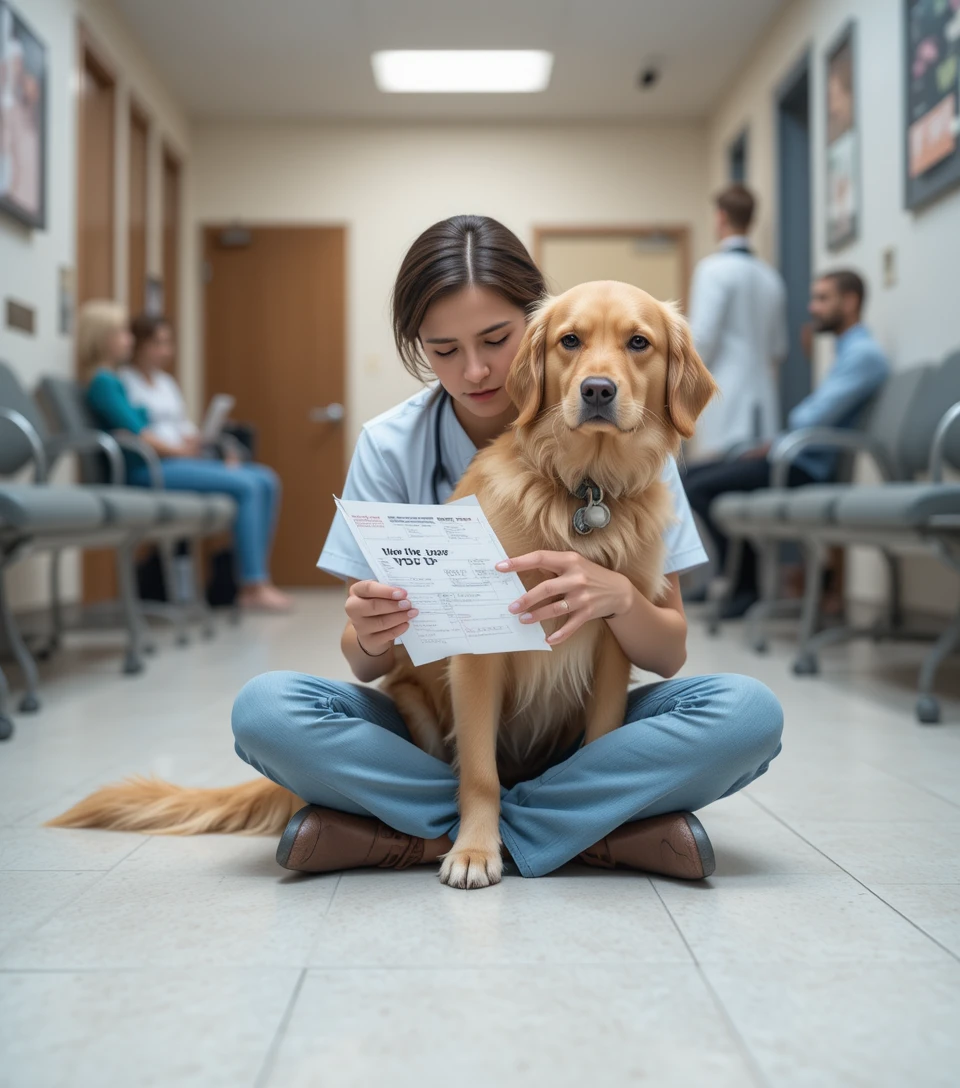Introduction
When Bella, a five-year-old golden retriever, suddenly collapsed at home, her family rushed her to the emergency vet. The diagnosis? A ruptured spleen. The treatment? Emergency surgery costing over $6,000—due immediately. With no pet insurance and little savings, the family faced a gut-wrenching question: save their beloved dog or risk financial collapse.
This heartbreaking situation is more common than many think. As veterinary costs continue to skyrocket, thousands of dog owners are forced into devastating decisions about their pets’ lives and their own livelihoods.
Why Vet Bills Are Skyrocketing

Veterinary care has advanced dramatically, but with progress comes a price.
- High-tech treatments like MRIs, chemotherapy, and orthopedic surgeries are now standard in many clinics.
- Specialist care—including oncologists, cardiologists, and surgeons—is often required.
- Inflation and lack of pricing regulation mean fees vary wildly, even within the same city.
Dog owners are often unprepared for these sudden expenses, especially when an emergency strikes without warning.
Common Emergency Treatments and Their Costs
When your dog is in distress, every second matters—but so does every dollar. Here’s what some typical treatments can cost:
| Emergency Treatment | Estimated Cost |
|---|---|
| Foreign object removal surgery | $1,500 – $5,000 |
| Torn ACL repair | $3,000 – $7,000 |
| Cancer treatment (chemo) | $2,000 – $10,000+ |
| Diagnostic imaging (MRI/CT) | $1,000 – $3,500 |
| Overnight hospitalization | $500 – $1,200 per night |
These figures don’t include follow-ups, medications, or complications, which can multiply the final bill.
The Emotional and Financial Toll on Pet Owners
Pet parents don’t just face financial pressure—they face moral anguish. Do you risk going into debt for your dog’s chance at recovery? What if the outcome isn’t guaranteed?
Many report:
- Guilt or shame over not being able to afford care
- Emotional trauma from having to euthanize a pet for financial reasons
- Family tension, especially when children are involved
- Mental health struggles from feelings of helplessness or regret
These are not just economic decisions—they’re deeply personal ones.
The Devastating Decisions Owners Are Forced to Make

When faced with huge vet bills, many dog owners feel backed into a corner. Some common (and painful) choices include:
- Euthanizing an otherwise treatable pet
- Surrendering the dog to a shelter, hoping they can afford care
- Delaying treatment, worsening the condition
- Taking on loans or credit debt, which may lead to long-term consequences
For many, it’s not a lack of love—it’s a lack of resources.
Are There Alternatives? Exploring Your Options
Thankfully, some options can offer hope when money is tight:
🏥 1. Payment Plans or Care Credit
Many vets offer financing solutions. Third-party services like CareCredit break down large bills into manageable monthly payments.
🐾 2. Pet Insurance
While it must be purchased before a crisis, pet insurance can cover 70–90% of vet bills, depending on the plan.
💝 3. Charities and Nonprofits
Organizations like RedRover Relief, The Pet Fund, and local humane societies offer grants or subsidies for urgent care.
🐶 4. Low-Cost Clinics
Community vet programs, veterinary schools, and mobile clinics can reduce basic care costs significantly.
How to Prepare Before a Crisis Hits
Being proactive can save lives—and money.
- Start an emergency pet savings fund
- Buy pet insurance early, especially for breeds prone to health issues
- Prioritize preventative care like vaccines and dental cleanings
- Learn your local low-cost care options in advance
Just as we plan for our own health emergencies, we should prepare for our pets’ as well.
Advocating for Change: What Needs to Happen
While individual preparation is crucial, systemic change is also needed:
- Transparent pricing from veterinary clinics
- Wider access to subsidized care for low-income families
- Education for pet adopters about financial responsibilities
- Government or community-based pet health support programs
No one should have to choose between their pet’s life and their financial stability.
Conclusion
For many, dogs are more than pets—they are family. But when veterinary bills become overwhelming, even the deepest bond can be tested. By spreading awareness, preparing financially, and advocating for change, we can help ensure that no dog owner has to make a heartbreaking choice alone.
If you’ve faced a similar situation, share your story. You might give someone hope—or a much-needed lifeline.
❓ Frequently Asked Questions (FAQs)
- Why are vet bills so expensive today?
Modern veterinary medicine uses advanced equipment, specialized staff, and increasingly costly supplies. - What are the most common costly dog emergencies?
Surgeries, poisoning, cancer treatment, broken bones, and internal injuries top the list. - How can I avoid being unprepared for high vet costs?
Consider pet insurance, maintain an emergency fund, and stay on top of preventive care. - Is pet insurance worth it for dog owners?
Yes—if purchased early, it can cover a majority of emergency costs and save thousands. - Are there free or low-cost veterinary options?
Yes—many areas have nonprofit clinics, university hospitals, and mobile vet programs. - Can I legally refuse treatment if I can’t afford it?
Yes, but vets may suggest euthanasia to prevent prolonged suffering if treatment is denied. - What emotional effects do tough pet decisions have on owners?
Guilt, sadness, depression, and anxiety are common after having to make financial-based medical decisions. - How do I talk to my vet about financial constraints?
Be upfront. Many vets will work with you or suggest alternatives and resources. - What are my options if I can’t pay for my dog’s surgery?
Ask about financing, reach out to pet aid nonprofits, or consult local shelters with veterinary support. - How can I support others facing similar dog health crises?
Share resources, donate to pet relief funds, or volunteer with local animal welfare groups.

